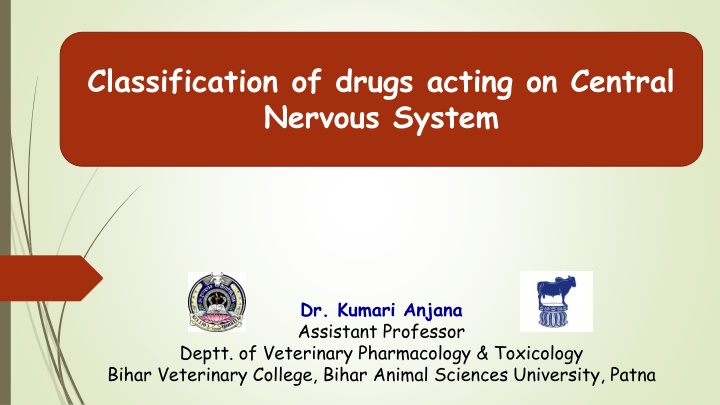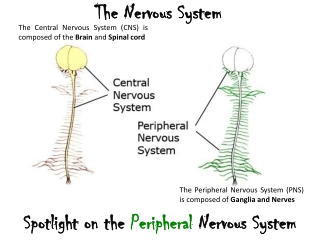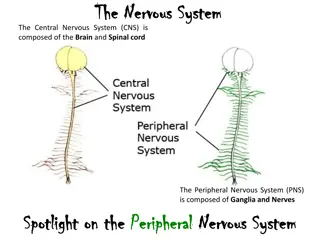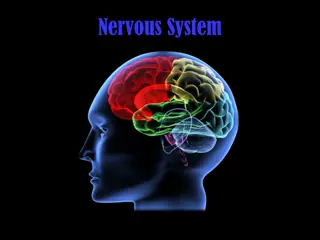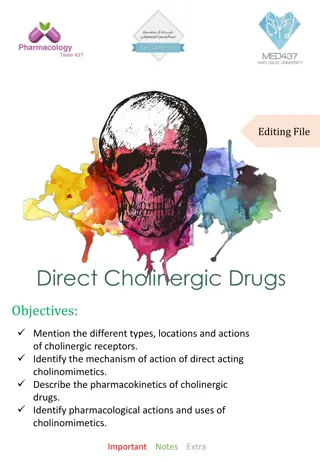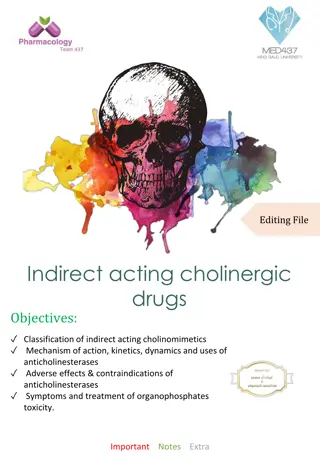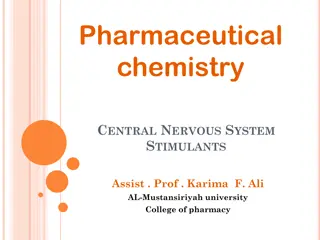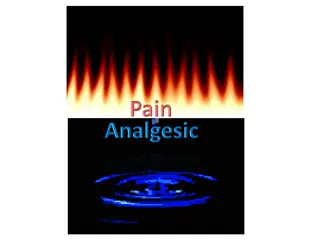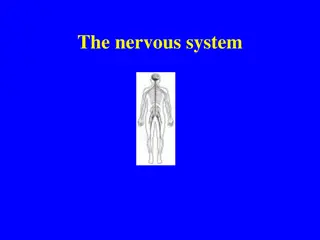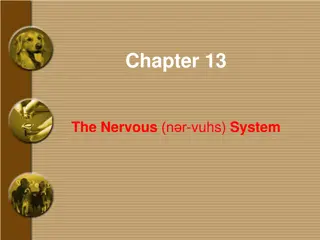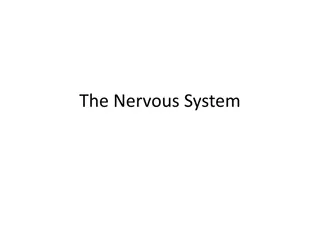Classification of Drugs Acting on Central Nervous System
The Central Nervous System (CNS) plays a crucial role in coordinating the body's functions and responses to the environment. Drugs acting on the CNS can be classified into CNS stimulants and CNS depressants. CNS stimulants include spinal, medullary, and cortical stimulants, with various direct and indirect acting drugs categorized based on their effects. On the other hand, CNS depressant drugs consist of tranquillizers, sedatives, and hypnotic sedatives, each with specific drug examples. Understanding these classifications is essential for comprehending the effects and clinical uses of drugs on the CNS.
Download Presentation

Please find below an Image/Link to download the presentation.
The content on the website is provided AS IS for your information and personal use only. It may not be sold, licensed, or shared on other websites without obtaining consent from the author.If you encounter any issues during the download, it is possible that the publisher has removed the file from their server.
You are allowed to download the files provided on this website for personal or commercial use, subject to the condition that they are used lawfully. All files are the property of their respective owners.
The content on the website is provided AS IS for your information and personal use only. It may not be sold, licensed, or shared on other websites without obtaining consent from the author.
E N D
Presentation Transcript
Classification of drugs acting on Central Nervous System Dr. Kumari Anjana Assistant Professor Deptt. of Veterinary Pharmacology & Toxicology Bihar Veterinary College, Bihar Animal Sciences University, Patna
Classification of drugs acting on Central Nervous System The CNS is an extremely Complex and heterogeneous system. It is the major coordinating system of the body & source of adjustment of an organism to its environment. Function-rapid communication system and is responsible for moment to moment control of various body activities. It regulates-rapidly changing visceral events, muscle contractions, secretions of some endocrine glands and functioning of the body system.
Classification of drugs acting contd on CNS The CNS is more sensitive to effects of drugs than any other system of the body. A large number of drugs influence the CNS as a major part of their therapeutic effect (e. g,. anaesthesia), side effect & toxic effect, divided into two major groups: CNS stimulants drugs CNS depressant drugs
CNS stimulants drugs Classification 1. On the basis of part of CNS where drug act: Spinal Stimulants or convulsants: Strychnine, picrotoxin Medullary Stimulants: Doxapram, Bemegride, Picrotoxin, Nikethamide, Leptazol Cortical Stimulants: Cocaine, amphetamine, methylxanthines.
CNS stimulants drugs contd Classification 2. On the basis of action (Direct or Indirect): Direct acting stimulants : Strychnine, picrotoxin and xanthenes derivatives. Indirect (Reflexly) acting stimulants: lobeline, ammonia, Veratrum, nicotine.
CNS stimulants drugs contd Classification 3. On the basis of clinical uses: Analeptics: Nikethamide, bemegride, doxapram. Psychostimulents: Amphetamines, methylphenidate, cocaine, methylxanthines, caffeine, theophylline. Cerebroactive drugs: Piracetam, dihydroergotoxine, Pyritinol.
CNS depressant drugs Classification Tranquillizer sedatives : Chlorpromazine, Azaperone, Droperidol, Haloperidol. (Neuroleptics, Ataractics, Tranquillizers) Hypnotic sedatives : Chloralhydrate, Xylazine, Detomidine, Medetomidine, Phenobarbitone, Diazepam, Zolazepam.
CNS depressant drugs contd Classification General Anaesthetics: Ether, Halothane, Enflurane, Isoflurane, Chloroform, Methoxyflurane Analgesics : Acetylsalicylate, Salicylate, Phenylbutazone, Isopyrin, Ibuprofen
CNS depressant drugs contd Classification Central muscle relaxants: Guaiphenesin, Mephenesin. Anticonvulsants : Phenobarbitone, Phenytoin, Diazepam, Carbamazepine, (Antiepileptics) Ethosuximide Neuroleptanalgesics: Fentanyl + Droperidol
